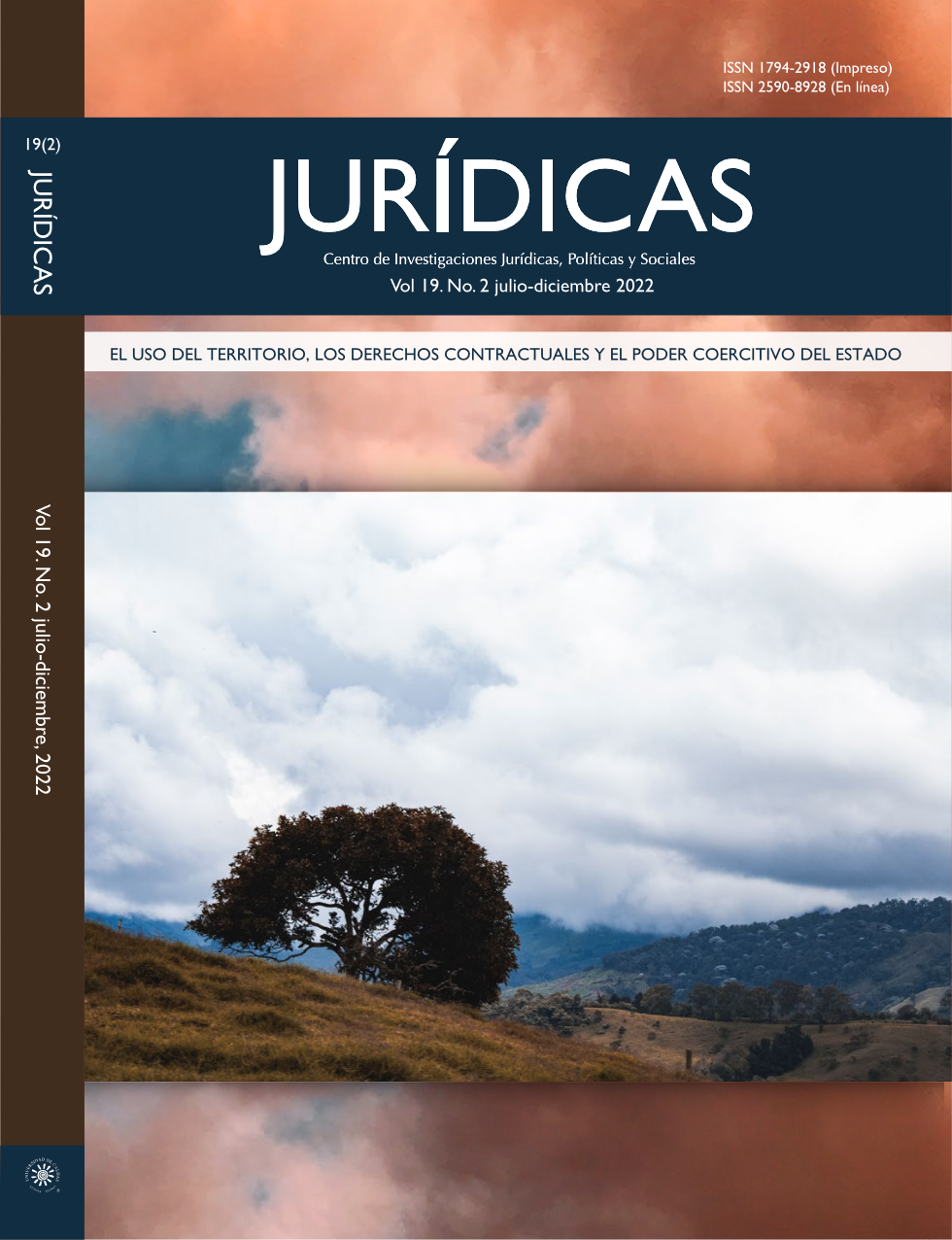Authors
Abstract
The objective of this work is to identify the evolution of criminal behavior throughout the life of a group of 824 women detained by the Chilean police for crimes of domestic violence in 2007. The design is pseudo prospective longitudinal, which allows its follow-up through 9 years, as if it corresponded to a prospective longitudinal study. Any new detention or complaint against them between the years 2007 and 2016 was considered a recidivism. The 60.6% of women reoffended accumulating a total of 2,583 crimes. The criminal trajectories of this population extended well beyond the age of 30, generating an elongated age/crime curve, given that an important part of these women continued committing crimes until they were 40 years old, moving away from the traditional way that the age/crime curve acquires.
References
Akers, C. & Kaukinen, C. (2009). The police reporting behavior of intimate partner violence victims. Journal of family violence, 24(3), 159-171. DOI: 10.1007/s10896-008-9213-4
Andreu, J. M. y Peña, M. E. (2013). Propiedades psicométricas de la Escala de Conducta Antisocial y Delictiva en adolescentes. Anales de psicología, 29, 516–522. DOI: 10.6018/analesps.29.2.135951
Block, C. R., Blokland, A. A., Van der Werff, C., Van Os, R. & Nieuwbeerta, P. (2010). Long-Term Patterns of Offending in Women. Feminist Criminology, 5(1), 73-107. DOI: 10.1177/1557085109356520
Blokland, A. & Van Os, R. (2010). Life span offending trajectories of convicted Dutch women. International Criminal Justice Review, 20(2), 169-187. DOI: 10.1177/1057567710368938
Blumstein, A. (2017). Some Trends in Homicide and Its Age‐Crime Curves. In F. Brookman, E. R. Maguire and M. Maguire (eds.), The Handbook of Homicide (pp. 44-53). DOI: 10.1002/9781118924501.ch3
Cauffman, E., Fine, A., Thomas, A. G. & Monahan, K. C. (2017). Trajectories of violent behavior among females and males. Child development, 88(1), 41-54. DOI: 10.1111/cdev.12678/full
Doherty, E. E. & Ensminger, M. E. (2014). Do the adult criminal careers of African Americans fit the “facts”? Journal of Criminal Justice, 42, 517-526. DOI: 10.1016/j.jcrimjus.2014.09.006
Eggleston, E. P. & Laub, J. H. (2002). The onset of adult offending: A neglected dimension of the criminal career. Journal of criminal justice, 30(6), 603-622. DOI: 10.1016/S0047-2352(02)00193-9
Farrington, D. P. (2003). Developmental and Life-Course Criminology: Key Theoretical and Empirical Issues – The 2002 Sutherland Award Address. Criminology, 41, 221-255. DOI: 10.1111/j.1745-9125.2003.tb00987.x
Farrington, D. P., Jolliffe, D., Hawkins, J. D., Catalano, R. F., Hill, K. G. & Kosterman, R. (2003). Comparing Delinquency Careers in Court Records and Self-Reports. Criminology, 41, 933-958. DOI: 10.1111/j.1745-9125.2003.tb01009.x
Farrington, D. P., Ttofi, M. M., Crago, R. V. & Coid, J. W. (2014). Prevalence, frequency, onset, desistance and criminal career duration in self‐reports compared with official records. Criminal Behaviour and Mental Health, 24(4), 241-253. DOI: 10.1002/cbm.1930
Ferrante, A. M. (2013). Assessing gender and ethnic differences in developmental trajectories of offending. Australian and New Zealand Journal of Criminology, 39, 34-53. DOI: 10.1177/0004865813490948
Gordis, L. (2005). Epidemiología. Elsevier.
Gottfredson, M. R. & Hirschi, T. (1990). A general theory of crime. Stanford University Press.
Gunnison, E. & McCartan, L. M. (2010). Persistent versus late onset among female offenders: A test of state dependent and population heterogeneity interpretations. Western Criminology Review, 11(3),
45-62.
Holtzworth-Munroe, A. & Stuart, G. L. (1994). Typologies of male batterers: three subtypes and the differences among them. Psychological Bulletin, 116, 476-497. DOI: 10.1037/0033-2909.116.3.476
Klausen, J., Morrill, T. & Libretti, R. (2016). The terrorist age‐crime curve: An analysis of American Islamist terrorist offenders and age‐specific propensity for participation in violent and nonviolent incidents. Social Science Quarterly, 97(1), 19-32. DOI: 10.1111/ssqu.12249
Kratzer, L. & Hodgins, S. (1999). A typology of offenders: A test of Moffitt’s theory among males and females from childhood to age 30. Criminal Behaviour and Mental Health, 9(1), 57-73. DOI: 10.1002/cbm.291
Leal, W. & Mier, C. (2017). What’s age got to do with it? Comparing juveniles and adults on drugs and crime. Crime & Delinquency, 63(3), 334-352. DOI: 10.1177/0011128715616131
Loeber, R. (2012). Does the study of the age-crime curve have a future? In R. Loeber and B. C. Welsh (eds.), The future of criminology (pp. 11e19). Oxford University Press.
Loeber, R. & Farrington, D. P. (2014). Age-crime curve. In Encyclopedia of criminology and criminal justice (pp. 12-18). Springer New York. DOI: doi.org/10.1007/978-1-4614-5690-2_474
Loeber, R., Farrington, D. P., Stouthamer-Loeber, M. & White, H. R. (Eds.). (2008). Violence and serious theft: Development and prediction from childhood to adulthood. Taylor & Francis.
Loeber, R., Jennings, W. G., Ahonen, L., Piquero, A. R. & Farrington, D. P. (2017). Female Delinquency from Childhood to Young Adulthood: Recent Results from the Pittsburgh Girls Study. Springer. DOI: 10.1007/978-3-319-48030-5
Marcus, R. F. (2017). Violence in Adolescence. In The Development of Aggression and Violence in Adolescence (pp. 63-111). Palgrave Macmillan US. DOI: 10.1057/978-1-137-54563-3_3
Mazerolle, P., Brame, R., Paternoster, R., Piquero, A. & Dean, C. (2000). Onset age, persistence, and offending versatility: comparisons across gender. Criminology, 38, 1143-1172. DOI: 10.1111/j.1745-9125.2000.tb01417.x
Piquero, A. R., Farrington, D. P. & Blumstein, A. (2007). Key issues in criminal career research: New analyses of the Cambridge Study in Delinquent Development. Cambridge University Press.
Piquero, A. R., Hawkins, J. D., Kazemian, L., Petechuk, D. & Redondo, S. (2013). Patrones de la carrera delictiva: prevalencia, frecuencia, continuidad y desistimiento del delito. Revista Española de Investigación Criminológica, 1, 1-40.
Sampson, R. J. & Laub, J. H. (2003). Life‐Course Desisters? Trajectories of Crime Among Delinquent Boys Followed to Age 70. Criminology, 41, 301-340. DOI: 10.1111/j.1745-9125.2003.tb00997.x
Simpson, S. S., Yahner, J. L. & Dugan, L. (2008). Understanding women’s pathways to jail: Analysing the lives of incarcerated women. Australian & New Zealand Journal of Criminology, 41(1), 84-108. DOI: 10.1375/acri.41.1.84
Steffensmeier, D., Zhong, H. & Lu, Y. (2017). Age and its relation to crime in Taiwan and the United States: Invariant, or does cultural context matter? Criminology, 55(2), 377-404. DOI: 10.1111/1745-9125.12139
Svensson, R. (2002). Strategic offences in the criminal career context. British Journal of Criminology, 42(2), 395-411. DOI: 10.1093/bjc/42.2.395

 PDF (Español)
PDF (Español)
 FLIP
FLIP


























